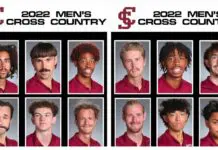As schools around the country begin to open for the start of a new year, it’s painfully obvious that this year is anything but normal. Some of our children will be learning online, some will be in-class, and some will be doing a hybrid of both.
For those students returning to a classroom setting the debate has been raging across the country on whether or not to make masks mandatory.
Back in May, the CDC set forth a list of recommendations for schools which included increased handwashing, physical distancing, and cloth face coverings for all children over the age of 2, stating:
Cloth face coverings are recommended as a simple barrier to help prevent respiratory droplets from traveling into the air and onto other people when the person wearing the cloth face-covering coughs, sneezes, talks, or raises their voice.
As scenes like the one out of Georgia with over 900 staff and students being forced to quarantine just days after the start of school play out, many school districts are now making the controversial choice in favor of mandatory masks.
But what parents need to know is that not all masks are created equal.
A study by a group of researchers out of Duke University found that some masks are better at preventing the spread of COVID-19 than others. They created a simple technique using a laser beam and a cell phone camera to test the effectiveness of 14 different masks ranging from N95s to neck gaiters.

Using a computer algorithm, the researchers counted the number of respiratory droplets that escaped through each mask when the wearer was speaking. For reference, they recorded control trials where the speaker wore no mask at all.
The camera was used to record a video of approximately 40 s length to record droplets emitted while speaking. The first 10 s of the video serve as baseline. In the next 10 s, the mask wearer repeated the sentence “Stay healthy, people” five times (speech), after which the camera kept recording for an additional 20 s (observation).
Each mask was tested a total of 10 times.
Not surprisingly the most effective mask was the fitted N95. What was surprising? Is that some of the face coverings were found to INCREASE the number of droplets, making them worse than wearing no mask at all.

The neck fleece (aka gaiters), folded bandanas, and knitted masks were all found to break down the larger droplets into smaller, more plentiful, particles.
And as smaller droplets are airborne longer and carry further, the use of these masks, especially those made of fleece, can actually cause more harm than good.
So when Great-Aunt Ethel offers to knit you up a bushel of face masks, it’s a good idea to just say no.
The good news for parents is that the cotton masks (either homemade or store-bought) that your children are likely to be wearing at school performed well.
As did the three-layer surgical masks. Both proved to help reduce the likelihood of transmitting the virus as compared to wearing no mask at all.
The researchers are hoping that their findings will raise awareness that even very simple masks, like homemade cotton masks, are effective tools in the fight against COVID-19.
As for back to school? Look, none of us WANT our kids to have to wear masks. What we really want? Is for this damn little bug to hurry up and bugger off to the great beyond. But the reality is, that the coronavirus is here to stay, for a while longer at least.
And so are masks.
As the numbers continue to escalate across the country the likelihood that more and more places will require masks will increase.
At some point during the school year, it’s very likely that your child will be asked to wear a mask to school.
The district I live in just announced that masks are mandatory in school hallways and common areas but NOT in classrooms, providing social distancing can occur. And let’s face it, trying to physically distance a gaggle of children in classrooms that are already too small likely won’t happen.
I’ve basically resigned myself to the fact that my kids WILL be wearing masks all day long, because the hell that was homeschooling? CANNOT BE REPEATED.
And if my kids have to wear masks? You can bet I want them to wear ones that actually work.
This new normal is hard. Our kids having to wear masks to keep each other safe is hard. But it’s up to us to make sure the hard is worth it. Choose the right face covering for yourself and your children. Because the one you choose really does make a difference.











